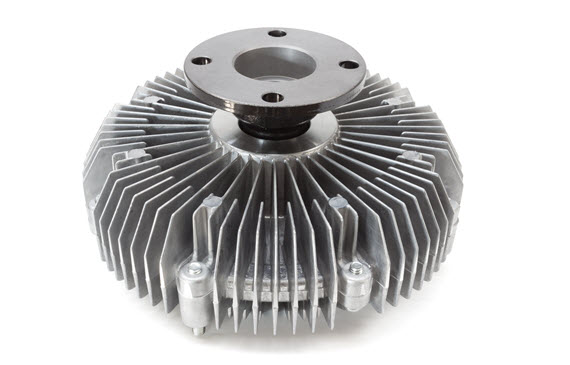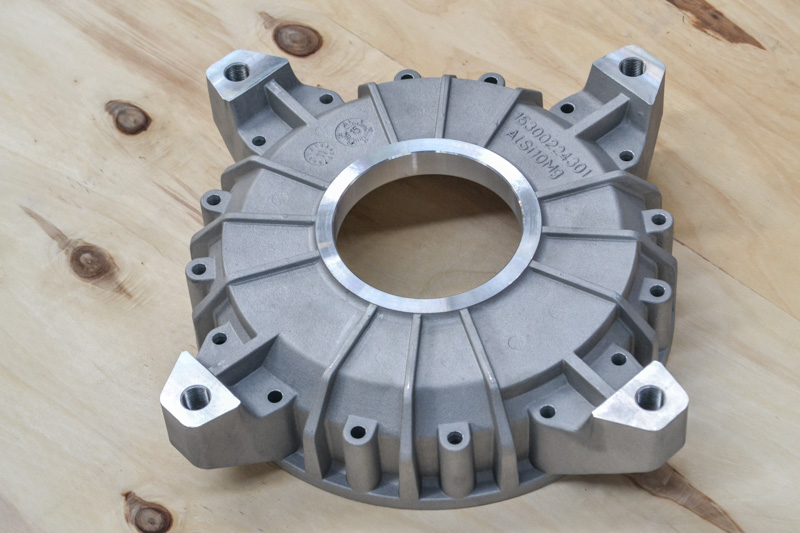All Concerning Light Weight Aluminum Castings: Recognizing Their Duty and Relevance in Production
Aluminum spreadings are indispensable to modern manufacturing, providing a mix of light-weight residential properties and toughness. They help with complicated designs while decreasing setting up costs. Industries such as automotive and aerospace frequently use these elements for improved efficiency. The production of aluminum spreadings is not without its difficulties. Comprehending the nuances of this procedure discloses both the advantages and prospective pitfalls. Discovering these aspects will certainly provide much deeper understandings right into their growing relevance.
Introduction of Aluminum Spreading Processes
Aluminum casting processes play a necessary role in manufacturing, using flexibility and effectiveness. These procedures include putting liquified light weight aluminum right into molds to produce specific forms and parts. Numerous techniques are used, including sand casting, die casting, and investment casting, each differentiated by its technique of mold production and the designated application.
Sand casting uses a mix of sand and binder to develop mold and mildews, permitting complex geometries. Pass away casting, on the other hand, includes requiring liquified aluminum into metal molds, causing high accuracy and smooth coatings. Financial investment spreading, frequently utilized for intricate designs, entails developing a wax pattern covered with a ceramic covering, which is after that filled up with liquified aluminum.
These casting methods satisfy diverse commercial requirements, making aluminum a preferred product for parts in fields such as automotive, aerospace, and durable goods. The selection of casting strategy substantially affects the end product's high quality and performance.
Advantages of Utilizing Light Weight Aluminum Castings
The advantages of using aluminum spreadings in production are many and considerable. To start with, light weight aluminum's light-weight nature adds to decreased general item weight, improving energy performance in applications such as aerospace and automotive sectors. In addition, aluminum spreadings exhibit outstanding corrosion resistance, ensuring long life and resilience in extreme environments. The product's electric and thermal conductivity additionally makes it ideal for different applications, consisting of electronic devices and warm exchangers.
On top of that, aluminum spreadings can be created with elaborate layouts, permitting a lot more complex forms that satisfy details practical requirements. This convenience adds to lowered assembly costs and enhanced design adaptability. Moreover, the casting procedure itself is reliable, allowing for high-volume production with constant high quality. Aluminum is recyclable, making it an ecologically friendly alternative in production. Jointly, these advantages highlight why light weight aluminum spreadings are significantly favored across varied sectors, using both efficiency advantages and financial performance.
Usual Applications of Light Weight Aluminum Castings
While various materials are used in production, light weight aluminum castings stand apart as a result of their wide range of applications throughout multiple industries. These spreadings are widely used in the vehicle sector for engine parts, transmission housings, and structural parts, adding to lighter automobiles and boosted gas performance. In the aerospace industry, aluminum spreadings are crucial for aircraft parts, where weight decrease is vital for performance and security.
Furthermore, the electric industry employs light weight aluminum castings for real estates and architectural elements in equipment, profiting from the material's outstanding conductivity. In consumer goods, light weight aluminum spreadings can be discovered in products such as devices and showing off devices, supplying sturdiness and a contemporary aesthetic. The building and construction market utilizes light weight aluminum castings in building components, window structures, and fixtures, showcasing their flexibility and toughness. Overall, light weight aluminum castings play an indispensable duty in boosting product efficiency and effectiveness across numerous markets.
Key Production Techniques for Light Weight Aluminum Castings
The manufacturing of light weight aluminum spreadings counts on different techniques, with sand casting and pass away spreading being among one of the most popular. Sand spreading involves creating mold and mildews from sand, enabling huge components and complex designs. In comparison, die casting makes use of high-pressure injection of liquified aluminum into reusable mold and mildews, providing precision and efficiency for automation.
Sand Casting Refine
Sand casting stands as one of the most extensively used methods for producing light weight aluminum spreadings, thanks to its flexibility and cost-effectiveness. This procedure involves developing a mold and mildew from a mixture of sand and a bonding agent, generally clay. When the mold and mildew is ready, molten light weight aluminum is put right into it, allowing the metal to fill up the dental caries. After cooling, the mold is escaped to expose the casting. Sand spreading accommodates huge parts and complicated geometries, making it appropriate for numerous applications. Furthermore, it permits easy adjustments, allowing manufacturers to readjust layouts quickly. However, the surface finish may need additional machining for specific applications, making sure the last product fulfills high quality requirements.
Pass Away Spreading Techniques
Pass away spreading stands for an extremely effective technique for creating light weight aluminum spreadings, identified by its capability to supply high precision and outstanding surface area finish. This strategy mainly includes compeling liquified light weight aluminum into a mold and mildew under high pressure, making certain that complex shapes and fine details are captured properly. There are two main die spreading approaches: warm chamber and chilly chamber. Hot chamber pass away casting is appropriate for alloys with reduced melting navigate to these guys factors and allows for faster cycles, while cool chamber die casting is suitable for high-temperature alloys, needing separate melting systems. Both techniques boost production rates and minimize material waste, making pass away casting a recommended selection in markets such as auto and electronics, where longevity and dimensional precision are critical.
Sustainability in Light Weight Aluminum Casting Manufacturing
While the need for aluminum spreadings continues to grow, makers are increasingly prioritizing sustainability in their manufacturing procedures. This change is driven by the requirement to reduce ecological effect and save all-natural sources. Lots of firms are embracing recycling campaigns, making use of scrap light weight aluminum, which significantly lowers power usage and greenhouse gas exhausts compared to primary light weight aluminum manufacturing. Additionally, advancements in casting modern technologies are allowing more reliable usage of materials, reducing waste throughout the manufacturing procedure.
Manufacturers are additionally exploring eco-friendly options to conventional casting approaches, such as 3D printing and advanced mold and mildew technologies, which assist maximize resource usage. Metal Castings. Furthermore, carrying out lasting techniques in supply chain management guarantees that raw materials are sourced properly. Consequently, the aluminum casting industry is making strides toward a more lasting future, straightening with international ecological objectives while fulfilling the raising demand for high-performance aluminum items
Obstacles and Factors To Consider in Light Weight Aluminum Spreading
Aluminum casting presents various obstacles that makers have to navigate to guarantee product integrity. Layout intricacy can make complex the spreading process, resulting in potential problems and increased production time. Additionally, keeping strenuous top quality control criteria is vital to satisfy the demands of precision and integrity in completed elements.

Style Complexity Issues
Designing components for aluminum spreading provides different complexities that engineers must navigate to attain excellent outcomes. One substantial obstacle is the requirement for accurate geometry; complex designs can bring about difficulties in mold and mildew creation and boosted danger of flaws. Furthermore, thermal buildings of aluminum necessitate mindful consideration of cooling rates, as irregular air conditioning can create bending. Wall density variations likewise present a challenge, as they can affect circulation attributes and structural stability. Designers have to stabilize style visual appeals with manufacturability, guaranteeing that attributes such as ribs and fillets are optimized for strength without making complex the casting procedure. Finally, factors to consider relating to draft angles are important to help with mold and mildew release, additional making complex the layout process. These elements jointly underscore the complexities associated with light weight aluminum casting layout.
Quality Control Difficulties
Achieving high-grade aluminum spreadings involves maneuvering a variety of quality control difficulties that can substantially affect the final item. Variations in raw product composition can lead to variances in casting properties, making it essential to ensure worldly high quality. Second, the casting procedure itself is susceptible to defects, such as porosity and shrinking, which can jeopardize architectural stability. Additionally, temperature level here control throughout melting and putting is important; variations can cause irregular solidification, influencing dimensional precision. Thorough evaluation methods, including non-destructive screening, have to be used to recognize flaws early. Lastly, keeping rigorous procedure paperwork and adherence to industry criteria is essential for traceability and top quality assurance, highlighting the elaborate balance called for to produce reliable light weight aluminum castings in production.
Future Trends in Light Weight Aluminum Casting Technology
As manufacturers seek to boost efficiency and sustainability, technologies in aluminum casting modern technology are emerging to fulfill these demands. One considerable trend is the combination of automation and expert system, which simplify production procedures and enhance precision in casting operations. These innovations lessen human error and optimize resource use, ultimately leading to cost decreases.
Furthermore, the fostering of advanced products and alloys is improving the landscape. New formulations boost efficiency attributes, such as deterioration resistance and light-weight properties, making aluminum castings much more flexible throughout various markets.
Lasting practices are gaining grip, with an emphasis on recycling and minimizing waste (Aluminum Foundry). Methods such as 3D printing are likewise being checked out to develop complicated geometries that were formerly unattainable
Often Asked Concerns

How Do Aluminum Castings Compare to Various Other Materials?
Aluminum castings supply benefits such as light-weight, deterioration resistance, and excellent thermal conductivity contrasted to other products. They are typically chosen for applications requiring toughness and efficiency, especially in aerospace and automotive sectors.
What Is the Lifespan of Aluminum Castings?
The lifespan of light weight aluminum spreadings typically ranges from 10 to 50 years, relying on ecological conditions, usage, and upkeep. Their corrosion resistance and durability add noticeably to their lasting efficiency in numerous applications.
Can Light Weight Aluminum Castings Be Recycled?
Yes, aluminum spreadings can be reused. The recycling procedure is reliable, enabling for the recovery of light weight aluminum without substantial loss of high quality, making it a sustainable choice in production and reducing environmental impact.
What Security Actions Are Needed Throughout Aluminum Casting?
During aluminum casting, essential safety and security procedures include wearing suitable individual safety tools, guaranteeing appropriate ventilation, maintaining tools, using fireproof products, and carrying out secure managing protocols for molten steel to avoid injuries and accidents.
Just How Do Temperature Adjustments Affect Light Weight Aluminum Castings?
Temperature level modifications noticeably impact aluminum spreadings by influencing fluidity, solidification prices, and mechanical buildings. Rapid air conditioning can cause boosted brittleness, while gradual cooling advertises better architectural stability and decreases the threat of problems.
Pass away spreading, on the other hand, includes compeling liquified aluminum right into steel mold and mildews, resulting in high accuracy and smooth finishes. The manufacturing of light weight aluminum spreadings relies on numerous methods, with sand spreading and pass away casting being among the most popular. Sand spreading stands as one of the most widely utilized approaches for creating light weight aluminum spreadings, thanks to its versatility and cost-effectiveness. Die casting stands for a highly efficient method for producing aluminum castings, identified by its capacity to supply high precision and outstanding Get More Information surface area finish. While the need for aluminum castings proceeds to expand, manufacturers are increasingly focusing on sustainability in their manufacturing procedures.